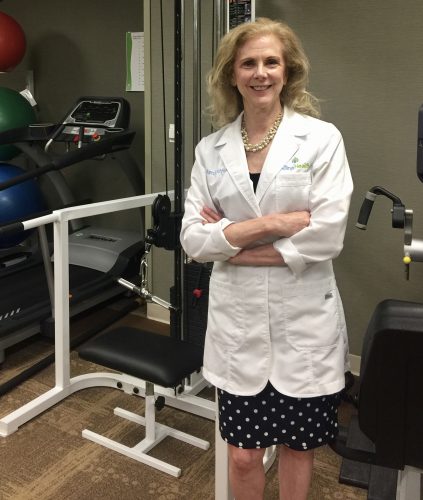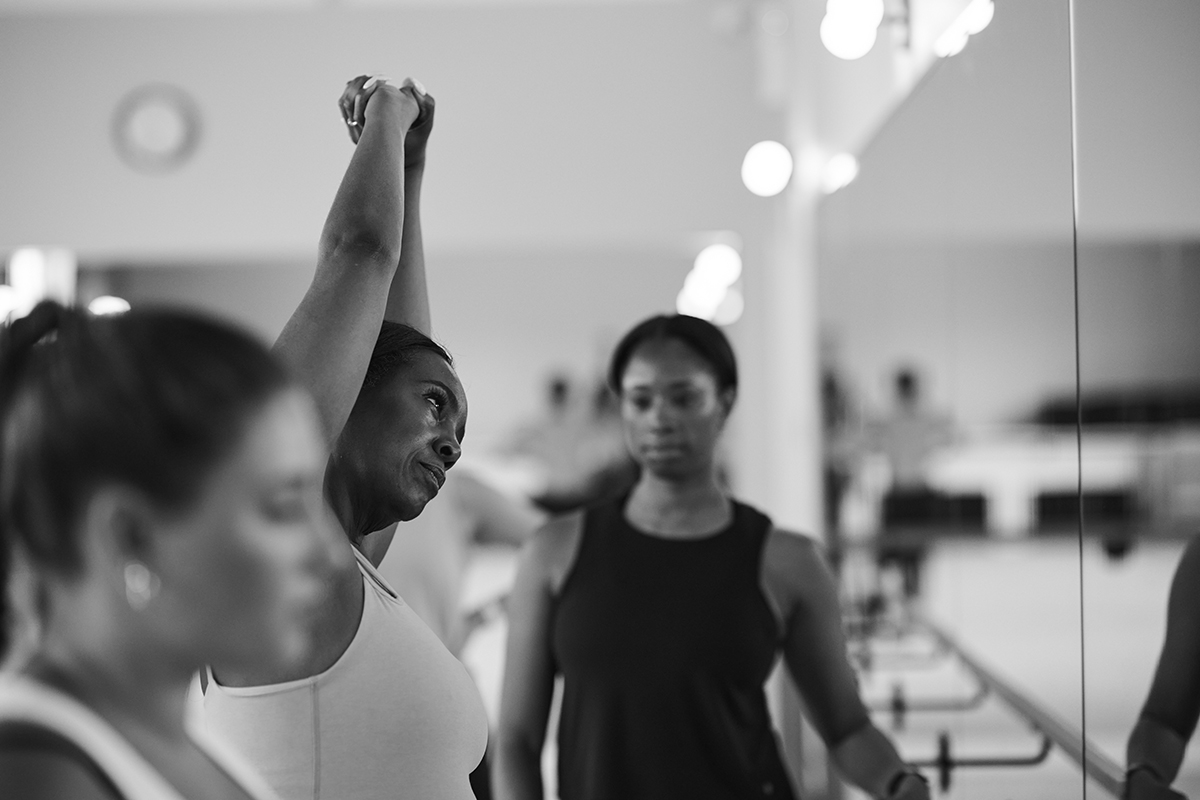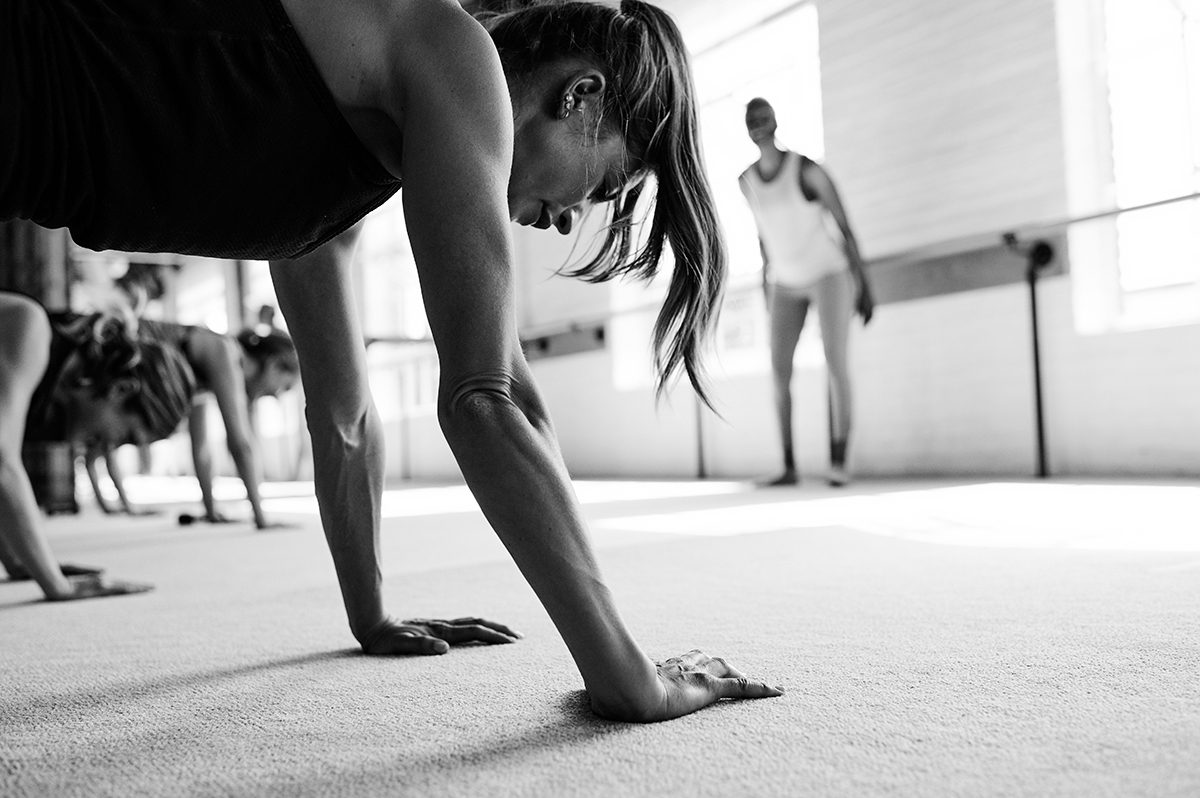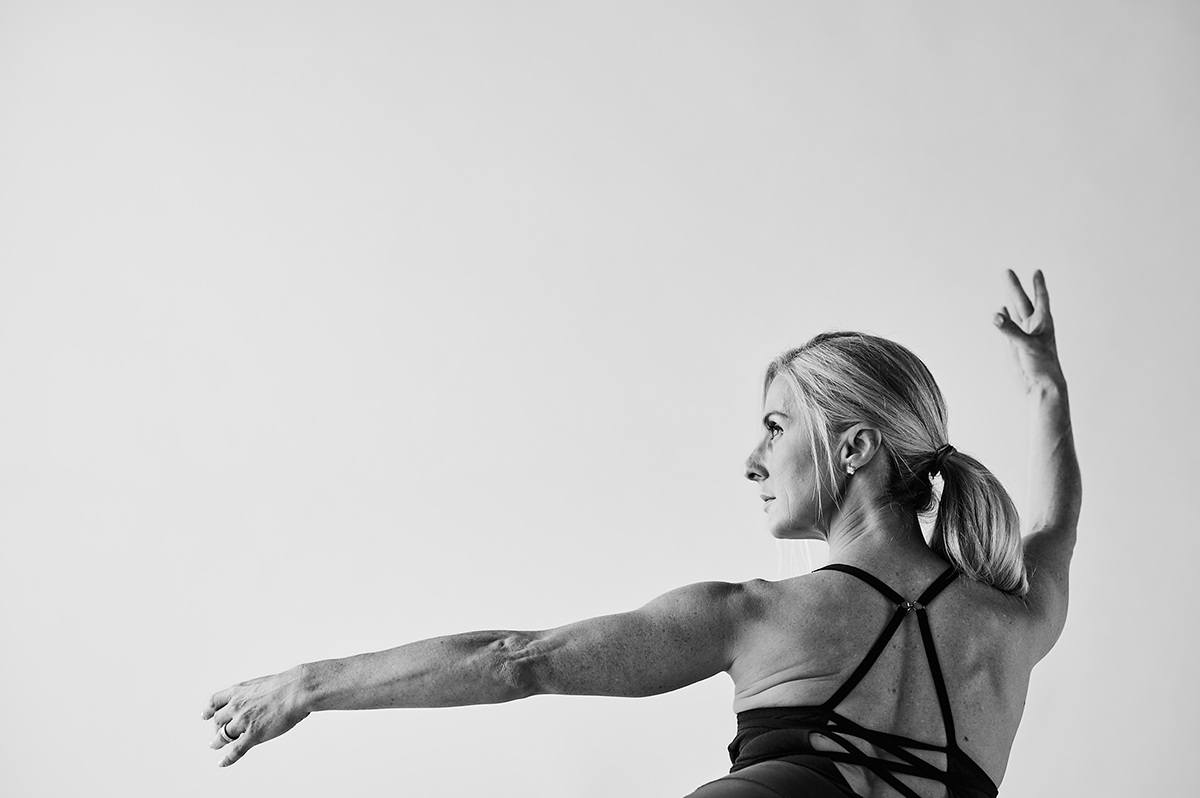New clients! For a limited time, Get 13 Classes for $78 (only $6 per class)
My Take on The Bar Method- with Dr. Hutchison

Many of us take class at the Bar Method without realizing all that has gone in to creating our favorite workout. The Bar Method workout was developed with physical therapists to provide a safe & effective full body workout. Our classes have a science behind it, and here to talk about that science is Dr. Nancy Hutchison, Bar Method client and Cancer Rehabilitation MD. Continue reading to get Dr. Hutchison’s thoughtful responses on a few frequently asked questions regarding The Bar Method workout:
Question: What is the exercise in Bar Method that is the most fat burning?
Answer: Flat back.
Why: The flat back exercise, when done properly, increases the heart rate by engaging multiple muscles including hip flexors, quads, pecs, shoulders, and abs. It is strategically placed at the half way point of the class when all these muscles have been warmed up enough to be reaching into their fat store for energy to burn if the student has been working hard and using all muscles in the warm up and the exercises preceding flat back. (Zinger is also fat burning and is placed at the end of seatwork to get a cardio and strength boost using muscles of the arms, back, abs, legs with the barre as a resistance tool.)
Question: Why is Bar Method the right form of exercise for the sedentary lifestyle of modern times?
Answer: Because the Bar Method uses both phasic (rapidly explosive) muscles and postural (stabilizer) muscles in every exercise and retrains the brain to use these groups of muscles together properly.
Why: Phasic muscles contract quickly (fast twitch muscles). Postural muscles contract slowly (slow twitch muscles). Postural muscles are designed to have more endurance. Exercise is not just about burning calories and building muscles. To transform your body you have to retrain your brain, concentrate, and learn body awareness with different stimuli. Sitting all day uses only postural muscles (but in poor positions). The brain forgets how to use phasic muscles and they become “de-conditioned” and lose their inter-connectedness with the postural muscles. This creates muscle imbalance and inability to use muscle groups together for maximal energy. The more you sit, the less you can activate your phasic muscles so you strain your back and other stabilizers, like shoulders, when you try to do more intense exercise. I like this quote from Thom Lamb, personal trainer, “I find a lot of people that have struggled the hardest to lose weight will be constantly dancing around and trying to fit extra calorie burning in. This is just distracting the brain from the transformative task that it needs as much energy as possible to perform, so encourage focus not fluster.” Thom Lamb, https://www.theptdc.com/2014/10/understanding-postural-and-phasic-muscle-imbalances/Personal Trainer Development Center. www.thomlamb.com
Question: What is an example of a phasic/postural exercise in Bar Method?
Answer: Thigh work and heel lifts.
Why: It is a misconception that the name of the exercise (for example: thigh or heel lift) in Bar Method is the only muscle being targeted. Thigh work uses all the quads (rectus femoris, vastus medialis, vastus intermedius, vastus lateralis), adductors, calf muscles, erector spinae (back), abdominals and scapular muscles. Some are stabilizing (postural) and some are working (phasic). Similarly, heel lifts are not just a calf muscle exercise. Heel lifts use the gastrocnemius and soleus (calf muscles), quadriceps, gluteus maximus, gluteus medius, and hamstrings. The exercise also stretches the hip flexors and uses the abdominals and back muscles for stability and posture. Heel lifts improve balance reactions. To get more intensity and cardio out of Bar Method, try to use all the muscles, both phasic and postural, that should be working for each exercise.
Question: Is the Bar Method a form of interval training?
Answer: Bar Method is a modification of the concept of classical interval training that was developed to improve performance in long distance runners.
Why: Many people assume that the Bar Method is the same as ballet barre exercises used in ballet class and interval training is something like Tabata or sprints. But the Bar Method uses the principle of interval training with the barre used as a piece of equipment for resistance (ie: strengthening: as in zinger, round back and flat back), balance (as in heel lifts), stretching (as in stretch at the barre). With interval training, the exercise intensity is varied at fixed intervals during a single exercise bout, which can increase the total volume and/or average exercise intensity. Interval training has been shown to benefit blood glucose, blood pressure, strength, body composition, bone density and cardiopulmonary fitness. Recent studies show it may reduce the development of osteoarthritis.
Question: Are running, cycling and other endurance exercises better for us than the Bar Method?
Answer: No.
Why: Although running, cycling, walking and all forms of exercise are good and promote longevity and reduced disease risk, these forms of exercise without strength and core training have a higher risk of injury and less optimal performance
Question: How do the sequences of stretching and strengthening in Bar Method improve muscle performance to benefit both the cardio and the strengthening benefit of the exercise?
Answer: The Bar Method uses dynamic stretching which is better than static stretching.
Why: Dynamic stretching is known to improve muscle performance and reduce injury. Additionally, the Bar Method uses physical therapy techniques of stretching from “proprioceptive neuromuscular facilitation” that keeps muscles from working against each other and maximizes lengthening using techniques such as “contract-relax”.
Question: What is an example of a dynamic stretching and strengthening exercise in Bar Method Warmup?
Answer: One weight lifts.
Why: If you have done traditional weight lifting you may think this exercise is only about activating the triceps by leaning over like on a weight bench. However, this exercise when done correctly (and it takes a lot of practice) activates the posterior deltoid, teres major (scapular muscle), abdominals, latissimus dorsi, triceps, erector spinae, the hamstrings on the front leg and the quadriceps femoris on the back leg. It improves posture and increases stamina. If done correctly, it should start raising the heart rate and warm up muscles for more fat burning exercises later.
Question: Does the Bar Method used closed chain exercise and is that important?
Answer: Yes. In many exercises in Bar Method, the closed chain is used to increase resistance, improve balance and increase control, all of which are important to the ability to activate a muscle effectively and safely for fat burning.
Why: Closed chain exercises use the body’s own weight to create the work with the foot or hand in constant contact with a surface rather than the foot or hand free. Closed chain exercises have less shear force on joints and use multiple muscle groups all together rather than focusing on one muscle such as when lifting a weight or using a weight machine. Closed chain exercises allow the muscle to activate eccentrically (lengthen while strengthening) which generates more power.
Question: Why do instructors emphasize breathing so much in Bar Method?
Answer: Breathing keeps you from performing the Valsalva Maneuver (holding your breath and bearing down). Also breathing out, expiration, is the best way to activate the deep abdominal muscle known as the transversus abdominus.
Why: The Valsalva Maneuver increases blood pressure and reduces the aerobic component of exercises by reducing blood flow to muscles. The transversus abdominus flattens the belly and prevents the pushing out of the abs that can lead to separation of the abdominal wall or hernias when people do crunches, especially if they Valsalva.
Question: Why do the instructors tell us to look in the mirrors all the time?
Answer: Muscle learning and performance (strength output) are enhanced by visual input
Why: Muscle learning involves the brain. The more feedback given to the brain, the more the brain can learn the right way to do the exercise and develop muscle memory that will make it automatic. The hands on corrections are tactile input that is also important. In Bar Method the instruction technique uses: tactile, verbal and visual cues. This creates the maximal input to gain maximal muscle learning that leads to better performance over time. To get more out of the exercises, use mental focus on something other than the target muscle group such as a focal point, a postural muscle, look in the mirror, ie use brain input.

About the Author
Dr. Nancy Hutchison, Cancer Rehabilitation MD
Dr Hutchison was inspired to begin her journey with the Bar Method when her daughter, Beth Hutchison, opened her own Bar Method studio in Lake Oswego, OR.



